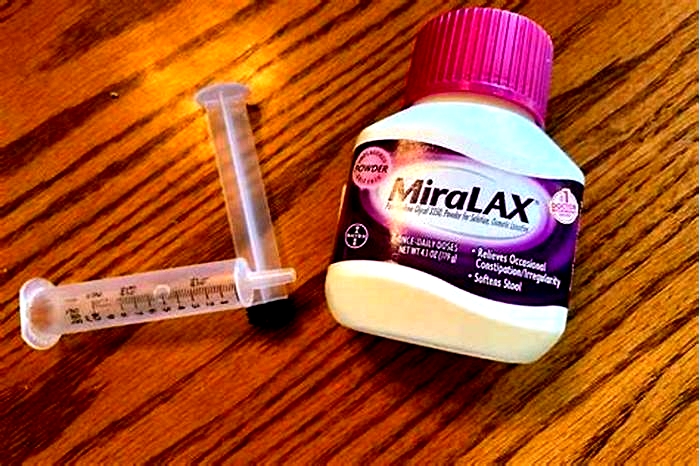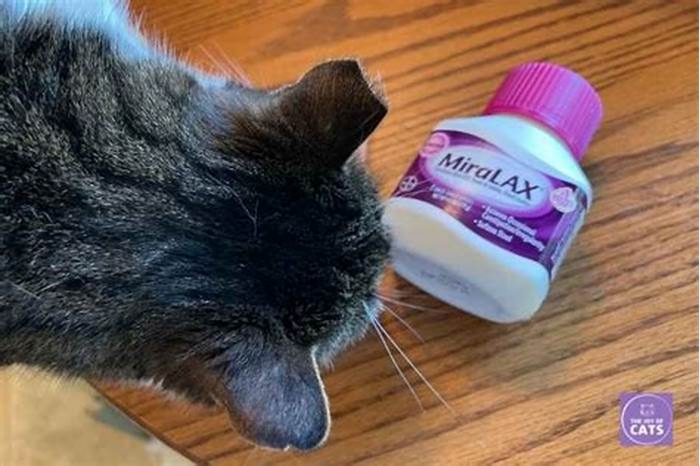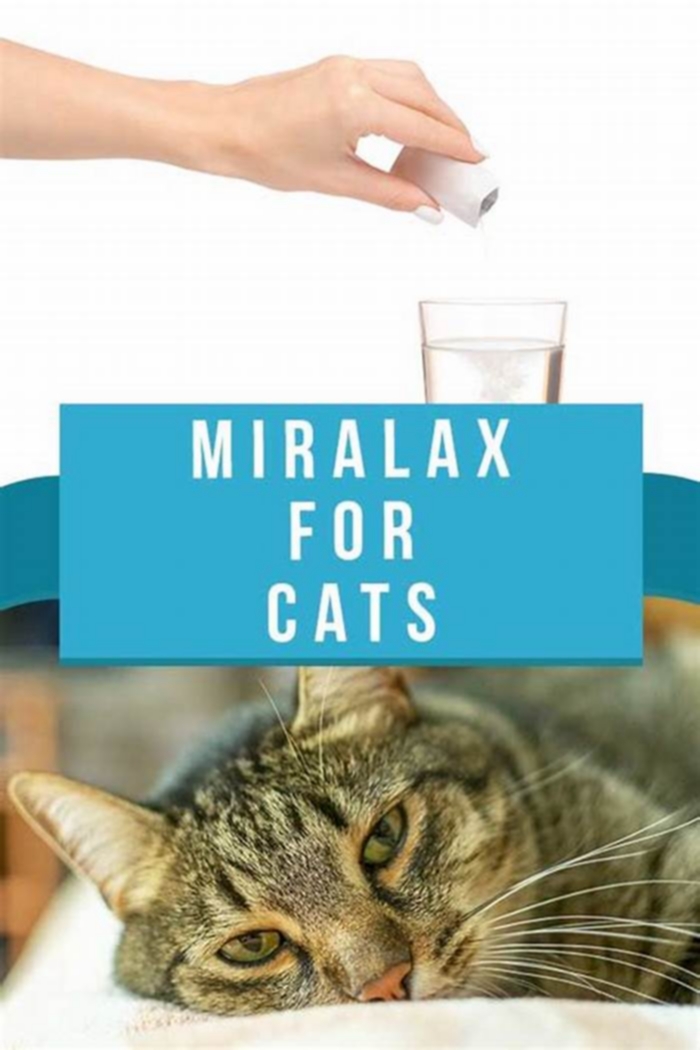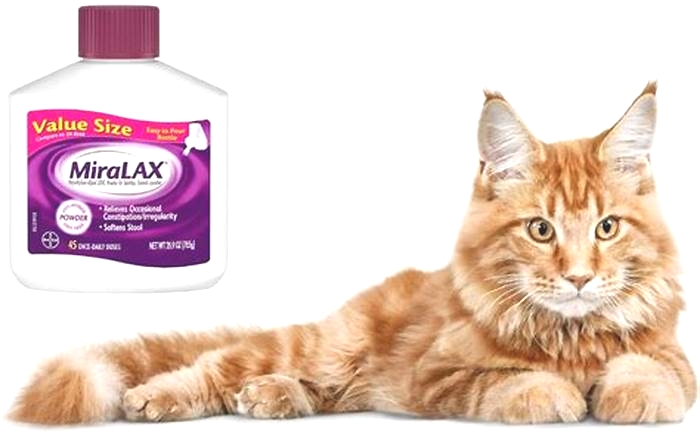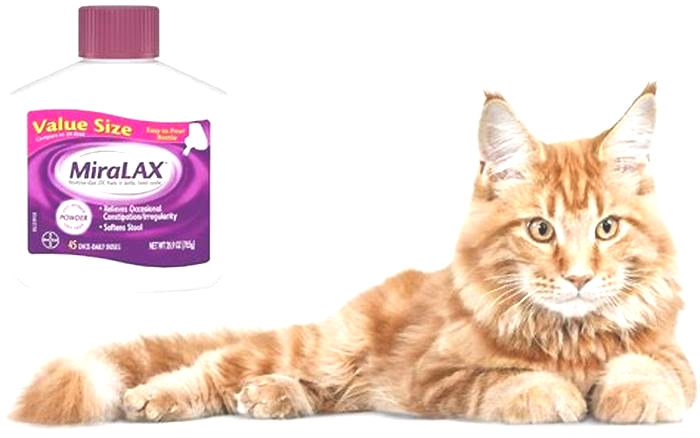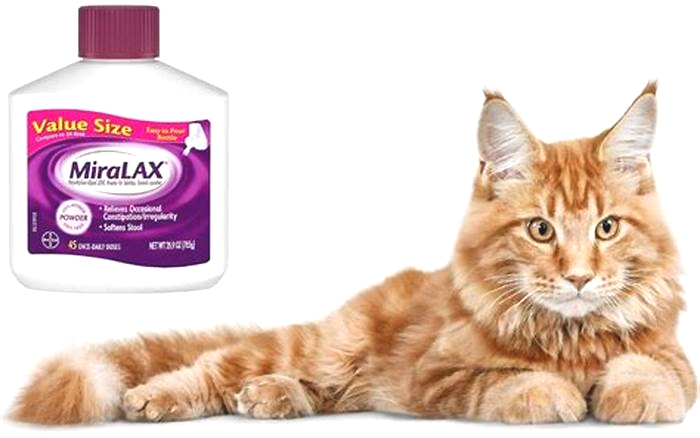Can you give Miralax to a cat
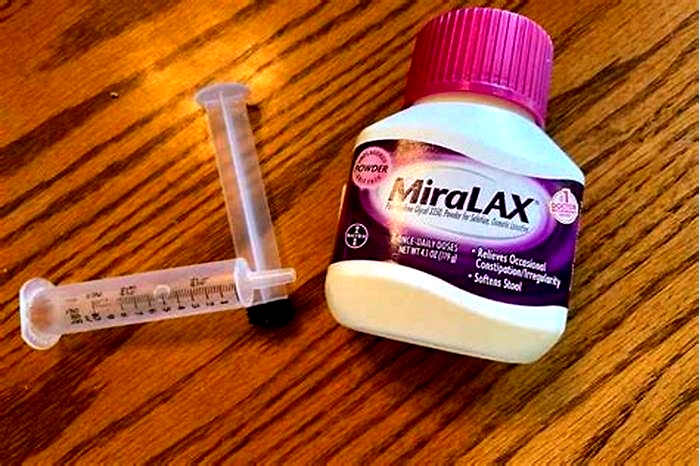
Miralax for Cats: Uses, Dosage, & Side Effects
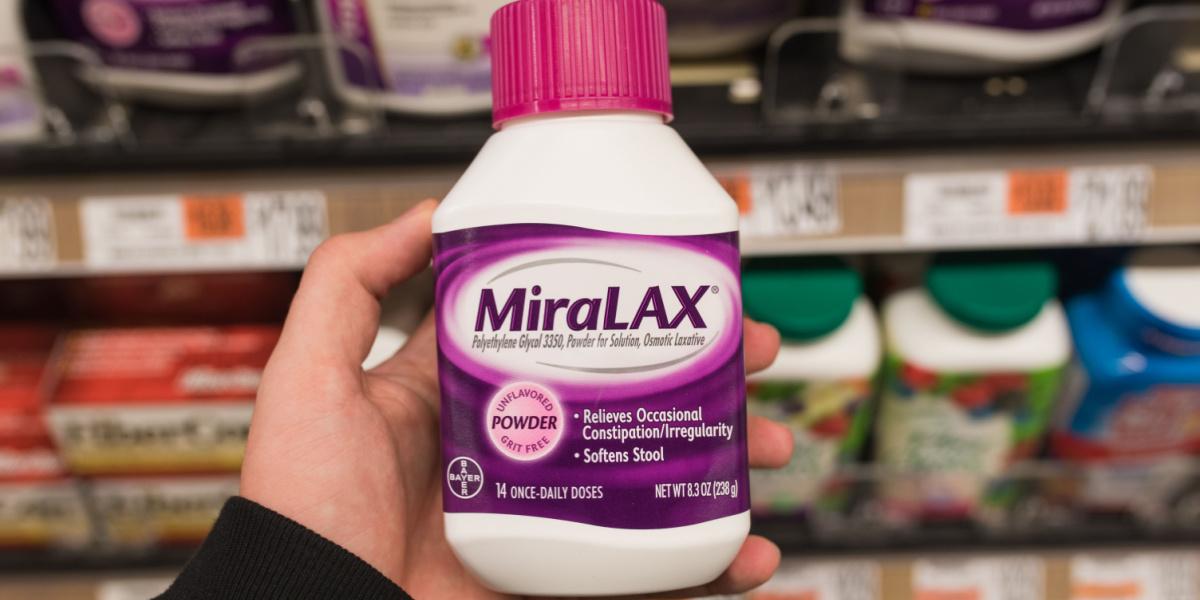
Miralax is a human medication often used for the treatment of constipation in cats. It comes in a tasteless, powder form, which is easy to give to cats and is readily available over the counter.
In this article, learn how Miralax works, the dosage and how to administer this to your cat, along with some common side effects.
Miralax for Cats Overview
Medication Type:
Osmotic laxative
Medication Form:
Powder form
Common Names:
Polyethylene glycol 3350
Effects:
Softens stools and treats constipation
Available Dosages:
Powder available in different sized bottles
Potential Side Effects:
Diarrhea, flatulence, dehydration
Precautions:
Use with caution in cats with dehydration, kidney disease, or sensitive stomaches
Contraindications:
Avoid using in cats that are unwell
About Miralax for Cats
Before we start discussing the use of Miralax in cats, we should know a little bit about Miralax. What is it? Miralax is a common over-the-counter medication used for the short-term treatment of constipation in humans. It contains the active ingredient polyethylene glycol 3350 (PEG 3350) and is classed as an osmotic laxative.
Through the process of osmosis, these laxatives draw water into the intestines and retain it there. As a result, the intestines swell with water and this softens the impacted, hard, dry feces stuck in the intestines. In this way, it acts as a stool softener.
Increased water in the intestines also helps to increase hydration and gut motility (prokinetic), which prevents further constipation. These methods of action will help to produce bowel movements in mild-moderate cases of constipation.
As with humans, Miralax is used for the same purpose in cats to treat constipation. Constipation is a common issue in cats, particular in older cats.
Common underlying causes of constipation in cats include diet change, kidney disease, fur ingestion, medications, or pain (e.g., arthritis or joint issues). Your vet will need to investigate the underlying cause of your cats constipation to remove the causing factor if possible and to treat it.
Miralax provides a gentle and easy way to treat your cat if theyre suffering from constipation. The tasteless powder is easy to administer and is readily available in stores. It might relieve constipation and avoid your cat needing more intrusive procedures, such as an enema. Always use Miralax under the advice and recommendation of your veterinarian.
Dose for Cats
Miralax is a human medication. Therefore, there is no official Miralax dosage. I recommend discussing the proper dosage with your veterinarian. They know your cats case and medical history the best and are in a better position to advise on the dosage for them. The dosage of Miralax might change based on your cats age and underlying health conditions, and the severity of their constipation.
However, a general guideline for the dose in cats is to administer one-quarter teaspoon once to twice daily per cat.
This is a rough guideline for the dosage of Miralax, but as Ive mentioned, I strongly recommend discussing this with your veterinarian first. Constipation can be a very serious condition and you need to get your vets advice first before attempting to treat this at home. This medication wont be suitable for every case of constipation.
How To Administer Miralax to Cats
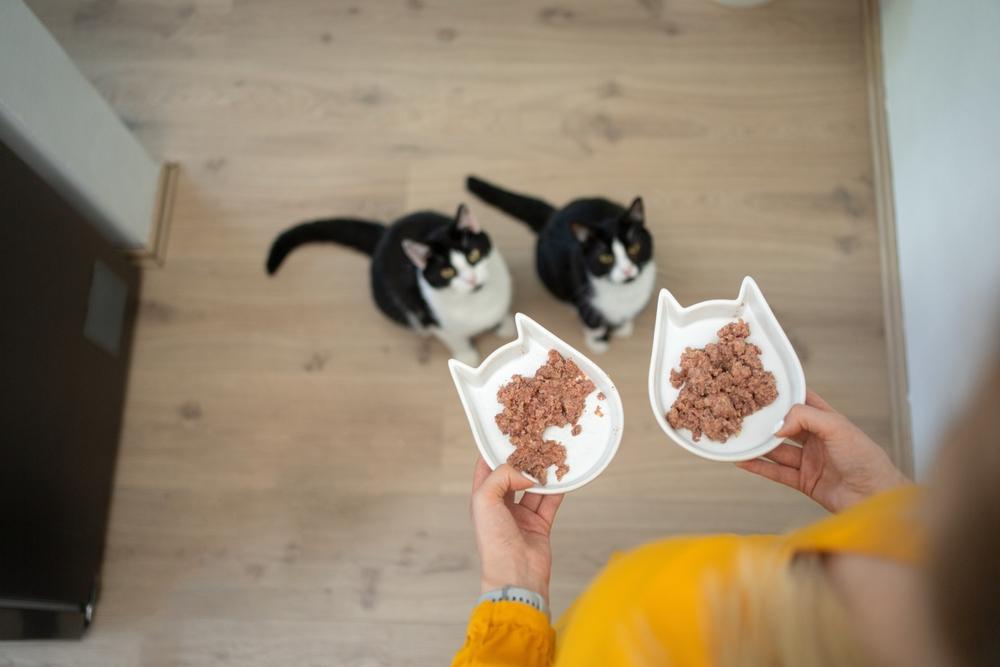
Because Miralax is a tasteless powder, it can easily be mixed into wet cat food.
Luckily for cat owners, Miralax comes in a tasteless powdered form. This makes it easier to administer to cats compared to other medications. Ensure that your cat is well hydrated prior to taking Miralax. Provide plenty of water bowls and water fountains to encourage drinking. To give your cat Miralax, simply mix their dose (based on your vets recommendation) into some of their favorite wet food.
Pick a wet food that they really like and mix the powder well to disguise it. Click herefor some tips on the best food to hide medication in.
Also Read:Best Cat Food For Constipation
Side Effects of Miralax for Cats
Miralax is generally a very safe medication to give to your cat, under the recommendation and advice of your vet. Side effects of this drug are minimal, but there are a few to consider.
As Miralax is an osmotic laxative, it draws water into the intestines. This might cause dehydration in the body, particularly in cats that have underlying conditions, such as kidney disease, or cats that are unwell and already dehydrated.
For this reason, Miralax should only be used if your cat is suffering from mild constipation and if your vet has advised it. Cats that are suffering from severe constipation are/or are very unwell will likely need veterinary treatment, which might include intravenous fluid therapy, x-rays to check for gastrointestinal obstruction, an enema to relieve the obstipation, and medications (e.g., cisapride). Severe constipation might cause an irreversible enlargement of the colon, called megacolon, which needs urgent veterinary care.
Laxatives have the ability to cause diarrhea or flatulence, particularly if too much is given. If this occurs, contact your veterinarian as they might need to prescribe a special diet, fiber, or medication to treat this. Use Miralax with care in cats that tend to have sensitive tummies, and keep a close eye on their litter box if theyre using Miralax.
Overdose and Emergencies
Miralax is a safe, over-the-counter medication and issues with overdoses are rare. In most cases, giving too much Miralax to your cat might cause diarrhea and gas. However, overdoses are possible with any drug and if you have any concern that your cat has overdosed, call your emergency veterinarian right away. You can also call the ASPCA Animal Poison Control Center (1-888-426-4435) or Pet Poison Helpline (1-855-764-7661) for more information.
Potential Drug Interactions With Miralax
Miralax is a human drug and has been shown to be safe to use in the majority of cases, with potentially fewer side effects than other laxatives. According tohuman data, the drugs below are usually avoided with Miralax use in people unless advised otherwise by their doctor:
- Bisacodyl
- Licorice
- Senna
- Sodium picosulfate
In veterinary medicine, potential drug interactions with Miralax arent well known, but it is a relatively safe medication to use. Always discuss Miralax with your veterinarian before giving it to your cat. This is particularly important if your cat has any underlying health conditions or is on medication.
Your vet will assess your cats individual case and see if its appropriate to use this medication. They will check if it interacts with any other medication your cat might already be on (e.g., for diabetes or hyperthyroidism).
How To Store Miralax
Store Miralax in a child-proof container, away from extreme heat, moisture sunlight, or cold. Avoid freezing temperatures and keep it out of reach of children.
Dont use medication that is out of datediscard it.
Final Thoughts
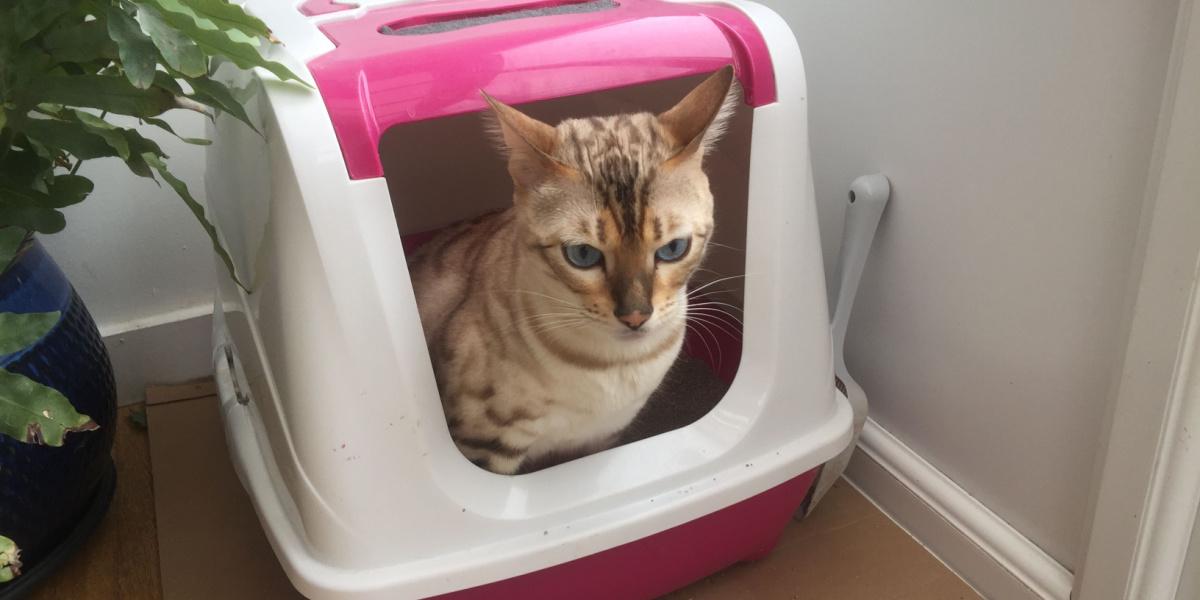
Miralax can be used under the guidance of your veterinarian to relieve constipation in most cats.
Miralax is a human medication that can be used to treat mild to moderate cases of constipation in cats. Its relatively safe with few side effects and is easy to give to cats as it comes in a tasteless powder form.
Cats should pass feces in their litter box within eight to 12 hours after Miralax medication. Be cautious giving it to cats that might be dehydrated or suffering from kidney disease. Always seek the advice of your veterinarian before giving Miralax to your cat.
Frequently Asked Questions
Is Miralax safe for cats?
Yes, Miralax is a relatively safe and easy-to-administer medication for cats to treat constipation. Its readily available over the counter and comes in a tasteless powder form. Discuss the use of Miralax with your vet before using it for your cat.
What if I miss a dose of Miralax?
Miralax is a safe drug used to treat constipation. It can be given once or twice daily depending on your vets advice. If you miss a dose and your cat still has signs of constipation, call your vet for advice. They might advise you to give a dose of Miralax.
How long can cats take Miralax?
Miralax is used short-term for treatment of constipation. It might be used for anything from a few days duration to a few weeks.
How long does it take for Miralax to work in cats?
Miralax usually works within eight to 12 hours in cats. Feces should be produced within 24 hours.
Should cats take Miralax with food?
Yes, Miralax should be administered to your cat in wet food. Ensure that your cat has plenty of water to prevent dehydration.
Miralax For Cats With Constipation
Miralax is a laxative powder that is added to your constipated cats drinking water. When your cat digests this drug it binds to the water in their gut, preventing it from leaving their intestines. Your cats poop becomes larger and softer inside them, contracting the bowel and making the poop pass more easily. This medication is routinely prescribed by veterinarians as a treatment for feline blockages, and works well to relieve discomfort in your constipated cat.
Contents
Today Ill share why Miralax for cats is so popular, what it does, how it works and what makes it safe and effective. But Ill also let you know what side effects to look out for, and when to stop using it and go back to the pet doctor.
What is Miralax for Cats?
Miralax for cats is a laxative, which usually comes in a powdered sachet that you add to their drinking water. It is a stool softener that makes them easier to pass.
How Often Should Cats Poop?
The general consensus is that cats poop, on average, once a day. However, there is plenty of room for healthy variation. This may be due to age, diet, or simply the fact that all cats are unique.
In fact, attempting to monitor the frequency of your cats bowel movements is rarely the most effective way of telling whether theyre constipated. Outdoor cats might do poops that you dont observe. And indoor cats might only manage to partly evacuate their bowels during a toilet trip, so that unpassed feces continue accumulating in their bowel.
Cat Constipation Symptoms
If your cat is showing any or all of the following signs, they might be suffering from constipation:
- frequent unsuccessful trips to the toilet
- loss of appetite
- vomiting
- weight loss
- lack of energy
- poor coat condition
What To Give Your Constipated Cat
The best treatment for constipation depends upon why theyre suffering in the first place.
Cats With Megacolon
Some research suggests that most cats (around two thirds) who experience constipation had pre-existing megacolon. Megacolon is a progressive disorder where the bowel is too large. Because of this, the muscles in the bowel wall dont work properly. For these felines, constipation is a symptom of an underlying structural problem.
Blockages
The next most common cause of constipation is a tumor or healed injury blocking the exit, so to speak. These cats need the obstruction to be removed in order to achieve normal bowel movements again.
Less Common Causes
Still further, less common causes of cat constipation include:
- dehydration
- unwillingness to use their litter box because it is dirty, being shared by another cat, etc
- loss of nervous control over the bowel
- and side effects of medication.
Your veterinarian is best placed to determine why they are constipated. Then they will recommend a course of treatment which solves the underlying problem if possible, and shifts the existing blockage. This might involve laxatives, an enema or a new diet. And very occasionally it may involve surgery to empty or remove the affected section of bowel.
What Laxatives Are Safe For Your Cat?
Several prescription and over the counter laxatives are considered safe for cats. But none of them should be used without a vets say-so.
For a long time, Lactulose has probably been the best known laxative used for cats. Your pet might also have been prescribed the active ingredient in Miralax under its generic name PEG 3350, before it was available over the counter. These days it is one of the most commonly recommended laxatives for cats. This is because it is easy to administer, and almost completely flavorless.
How To Use Miralax For Cats
This drug is sold as a water soluble powder, either in a tub, or single dose (for humans!) sachets. The powder can be dissolved in your cats drinking water, or a wet food meal. Adding it to your cats food is usually a more reliable way to ensure they consume the right dose, since cats rarely empty their water bowl.
If your constipated cat has lost their appetite, you can try adding Miralax to a warm broth instead of plain water. For some cases of constipation, your vet might prefer to admit them as an inpatient. They can then administer via a nasal drip. This is a good way to make sure they receive the correct does promptly, and monitor their response to it.
How Does Miralax Work In Cats?
The active ingredient in Miralax is polyethylene glycol 3350, or PEG 3350. PEG 3350 is hydrophilic which means it attracts and bonds water molecules. One molecule of PEG can bind up to 100 molecules of water!
When cats take this drug it binds to water in the gut and stops that water being absorbed out of the intestine. This makes their poop larger, and softer. The increase in volume stimulates the muscles in the bowel to contract and start moving their contents normally again. And being softer, it is more easily passed.
Miralax Dosage For Cats
Your veterinarian will recommend how much to add to her meals, how often, and how long for. Theyll base their recommendation on factors like how severely constipated your cat is. And how far their stools are from the optimum consistency.
Vets report that the effective dose varies widely from cat to cat, so individualised dosing is essential. As a general guide, cats only need about to of a teaspoon, twice a day. This is much less than the contents of a single dose sachet. Those sachets contain single doses for humans!
How Long Does It Take For Miralax To Work In Cats?
This can vary a lot, from a couple of hours to a few days. Most owners notice their cat experiencing some relief within 6-12 hours of their first dose. One study found that the average time taken for Miralax to take effect in cats receiving it via nasal drip was eight hours.If it is not working after 3 days then you will need to go back to your animal doctor for further advice.
Can I Give My Cat Miralax Daily?
Give your cat Miralax once a day unless advised otherwise by your veterinarian. Continuous treatment of constipation caused by megacolon using laxatives gradually loses its effectiveness. Remember that is most cases of constipation.
Which is why its so important to see a vet, and establish why your cat is constipated in the first place. Because tackling the underlying cause is the only way to permanently solve the problem.
If your cat has chronic, or long term constipation, your vet might recommend a combination approaches. This could include frequent laxatives, drugs to stimulate muscle function in the gut, and a specialist high fiber diet.
How Can I Get Miralax For Cats?
The Miralax cats take is the same product widely available over the counter at pharmacies and grocery stores. If your vet recommends it, youll be able to go and pick it up yourself, without a prescription. You can then administer it to your cat at home, with their normal meal.
Is Miralax Safe For Your Cat?
Miralax for cats is a safe, effective and palatable treatment for constipation when used under veterinary supervision. It might be insufficient to treat a large and severely impacted volume of constipation, and administered too frequently it can make a chronic constipation problem worse.
It cant solve constipation where the volume of retained poop is too much to expel normally. If this happens, your vet might recommend manually removing the blockage under general anaesthetic.
Side Effects Of Miralax In Cats
Miralax works by binding water in the gut. This stops it being absorbed through the gut wall into the rest of the body. Due to this, it can cause or exacerbate dehydration. Cats taking it should be encouraged to drink plenty of fresh water
Good ways of doing this include adding tasty, meat or fish broths to their wet food. Drinking fountains work well too.
Like any laxative, a large dose can also go a little too far, and cause diarrhea. Call your vet if you believe your cat is experiencing any side effects. (Besides the pleasant relief of finally being able to use the litter box!)
Avoid Home Remedies for Cat Constipation
Although it might be tempting to try to treat your cats constipation with home remedies, the best course of action is to see your veterinarian. You dont know the cause of their lack of bowel movements, and it could be something that needs immediate and effective action.
Has Your Cat Ever Needed Miralax?
Did you find it straightforward and effective to use? Have you got any tips for making it as palatable as possible, and encouraging cats to take on plenty of fluids during treatment? Let us know in the comments box!

